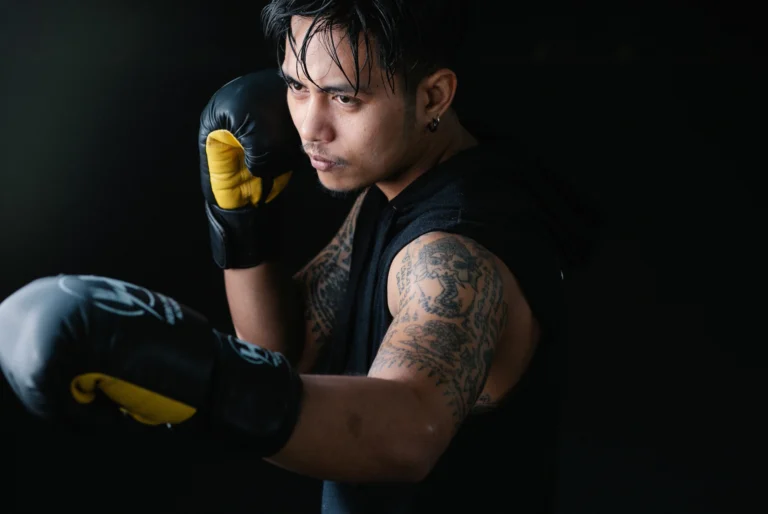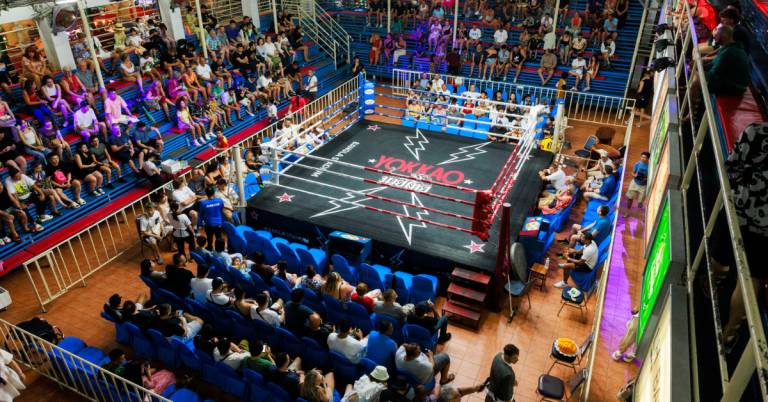Combat sports captivate millions worldwide, with Muay Thai and Mixed Martial Arts (MMA) leading the charge as premier fighting disciplines. Global viewership for major MMA events reaches over 300 million fans, while Muay Thai maintains its position as Thailand’s national sport with growing international appeal. Understanding the fundamental differences between these combat sports enhances appreciation for both disciplines.
These martial arts share intensity and strategic depth but diverge significantly in philosophy, execution, and tradition. This comprehensive comparison explores their unique characteristics, helping enthusiasts and newcomers alike navigate the distinctive worlds of Muay Thai and MMA.
Historical Origins and Cultural Evolution
Ancient Roots of Muay Thai
Muay Thai’s legacy stretches back over 600 years, emerging from battlefield necessity during the Sukhothai Kingdom era. Ancient Siamese warriors developed this “Art of Eight Limbs” for close-quarter combat when weapons failed. The martial art evolved through centuries of refinement, maintaining deep connections to Thai culture, Buddhism, and national identity.
Traditional ceremonies like the Wai Kru Ram Muay ritual dance and the sacred Mongkol headband wearing demonstrate how Muay Thai transcends sport to embody spiritual practice. Thai soldiers still train in this discipline as part of military preparation, preserving its warrior heritage.
Modern MMA Development
MMA represents combat sports evolution in the modern era, formally emerging through Brazil’s Vale Tudo (“anything goes”) competitions in the early 20th century. These no-holds-barred contests pitted different martial arts styles against each other to determine superiority. The Ultimate Fighting Championship’s 1993 launch transformed these raw competitions into organized sport.
Modern MMA synthesizes techniques from Brazilian Jiu-Jitsu, wrestling, boxing, Muay Thai, judo, and kickboxing. This integration created comprehensive fighting systems emphasizing adaptability across all combat ranges. The sport continues evolving as fighters discover new technique combinations and training methodologies.
Rules and Competition Format
Round Structure and Timing
Professional Muay Thai rules feature five three-minute rounds with two-minute rest periods between rounds. This format tests endurance while allowing fighters to demonstrate technical prowess across extended exchanges. Stadium fights in Thailand often see slower first rounds as fighters gauge distance and establish rhythm.
MMA regulations under the Unified Rules mandate three five-minute rounds for standard bouts, extending to five rounds for championship fights. One-minute rest periods create different pacing dynamics. The longer rounds favor ground exchanges and position battles, while shorter breaks demand superior cardiovascular conditioning.
Winning Conditions
Victory in Muay Thai comes through knockout, technical knockout, or judges’ decision based on effective striking, aggression, and ring control. Scoring emphasizes clean technique execution, particularly kicks and knees to the body. Fighters demonstrating superior balance and composure while landing significant strikes earn higher scores.
MMA offers multiple victory paths including knockout, submission, or decision. The 10-point must system borrowed from boxing determines round winners. Judges evaluate effective striking, grappling, aggression, and octagon control. Submission victories through joint locks or chokes add complexity absent from pure striking contests.
Fighting Techniques and Striking Systems
The eight limbs of Muay Thai create distinctive striking patterns utilizing fists, elbows, knees, and shins. Fighters develop devastating leg kicks targeting opponents’ mobility and body kicks disrupting breathing patterns. The clinch becomes a battlefield where knees and elbows inflict close-range damage while fighters battle for dominant positions.
MMA techniques encompass striking borrowed from various disciplines plus wrestling and submission grappling. Fighters blend boxing combinations with Muay Thai kicks, then transition to takedowns and ground control. This multifaceted approach demands proficiency across all fighting ranges. Successful MMA competitors master distance management for striking, clinch work for transitions, and ground skills for submissions or position advancement.
The strategic depth differs significantly between disciplines. Muay Thai specialists perfect limited techniques to exceptional levels, while MMA fighters balance competency across numerous skills. Neither approach proves superior; each serves different competitive frameworks and athlete preferences.
Training Methods and Conditioning
Traditional Muay Thai training emphasizes repetition and conditioning through time-tested methods. Daily sessions include extensive pad work with trainers calling combinations, heavy bag rounds developing power, and technical sparring refining timing. Fighters run several kilometers each morning, building the cardiovascular base essential for five-round wars.
MMA conditioning requires periodized training addressing multiple disciplines simultaneously. Athletes might grapple mornings, strike afternoons, then drill wrestling in evenings. Strength and conditioning programs incorporate explosive movements, flexibility work, and sport-specific drills. Training camps last 6-12 weeks, peaking fighters for specific opponents.
The mental preparation differs markedly. Muay Thai fighters often train at camps living alongside teammates, creating family atmospheres supporting psychological development. MMA athletes frequently work with sports psychologists addressing performance anxiety across varied skill demands.
Equipment and Safety Considerations
Fighting gloves distinguish each sport immediately. Muay Thai utilizes 8-10 ounce gloves providing hand protection while maintaining striking surface area. These gloves allow clinch gripping essential for knee strikes and sweeps. Fighters wrap hands extensively, supporting wrists through hundreds of strikes per session.
MMA’s 4-ounce gloves balance minimal hand protection with grappling functionality. Open fingers enable submission attempts and wrestling control. The reduced padding increases knockout potential but raises hand injury risks. Both sports mandate mouthguards, with MMA adding mandatory groin protection.
Competition environments create tactical differences. Muay Thai’s square ring with ropes enables fighters to lean back avoiding strikes. MMA’s octagonal cage prevents escape, forcing engagement. These structural elements influence movement patterns, defensive strategies, and referee interventions.
Career Paths and Competition Opportunities
Thailand’s stadium circuit offers structured progression for Muay Thai fighters. Athletes begin at small provincial venues, earning opportunities at prestigious Bangkok stadiums like Lumpinee and Rajadamnern. Champions defend titles regularly, building legacies through consistent excellence rather than sporadic superfights.
Professional MMA operates through promotional companies ranging from regional circuits to international organizations. Fighters negotiate individual bout agreements, building records toward championship opportunities. The independent contractor model creates financial uncertainty but allows athletes to control career trajectories.
Both sports offer amateur competitions developing future professionals. Muay Thai’s amateur rules often restrict elbow strikes and reduce round durations. Amateur MMA eliminates certain strikes protecting developing fighters while maintaining submission opportunities.
Which Combat Sport Suits Different Goals
Fitness enthusiasts seeking comprehensive workouts find Muay Thai’s structured training ideal for cardiovascular development and functional strength. The emphasis on technique over athletic attributes welcomes practitioners across age ranges and fitness levels. Cultural appreciation adds depth beyond physical benefits.
Competitors drawn to strategic complexity and varied challenges gravitate toward MMA’s diverse skill requirements. The sport rewards analytical minds capable of recognizing and exploiting opponent weaknesses across multiple disciplines. Athletic specimens combining strength, speed, and flexibility excel.
Self-defense applications favor MMA’s comprehensive approach addressing standing and ground scenarios. However, Muay Thai’s striking focus proves highly effective for situational awareness and creating escape opportunities. Individual preferences and specific threat assessments guide optimal choices.
Experience Authentic Muay Thai in Action
These combat sports offer distinct paths for fighters and fans alike. Muay Thai preserves centuries of warrior tradition through disciplined striking artistry, while MMA showcases modern combat evolution through technical diversity. Both deserve respect and appreciation for their unique contributions to martial arts.
Experience authentic Muay Thai firsthand at Phuket’s premier stadiums. Bangla Stadium offers electrifying matches in Patong’s entertainment heart, while Patong Stadium delivers traditional fight nights with international matchups. Browse all stadium options, compare VIP packages, and secure ringside seats for unforgettable Muay Thai action. Book tickets online now!












